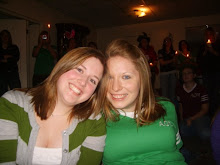
I Love My Hair by Natasha Anastasia Tarpley
Illustrated by E.B. Lewis
Published by Little, Brown, and Company 1998
I Love My Hair by Natasha Anastasia Tarpley is a charming book about a young girl’s experiences with her hair. The book opens with the narrator sitting in between the legs of her mother getting her hair brushed. As she thinks about various hairstyles she has had, she begins to discover what it means to really begin to accept oneself. As she talks about the various hair styles she has worn, and the meaning behind them. She mentions the history of wearing hair in an afro, cornrows, or a weaved bun. I think it was especially powerful when the author mentioned why some people might choose to wear an afro.
This book seems to be one of the most relatable of the books in my text set. Often, young girls of all races struggle with learning to accept themselves for things which make them different from others. This book is one which girls can not only relate to, but it also puts a positive spin onto something which many young girls dread: getting the tangles out of their hair.
The illustrations by E.B. Lewis are done in watercolor. They are vivid, and the backgrounds are perhaps the most intriguing. The illustrations tell the story behind the text. They greatly enhance the story and would be great for struggling readers to use to help to tell a fuller version of the story.
The author of this book, Natasha Anastasia Tarpley, has also written other books relating to adult African American identity. It is clear that she is aware of her audience in her writing of this book. In the note from the author at the beginning of the book, Tarpley mentions her own struggle with choosing a hairstyle that represents her history and her identity (she has felt most comfortable wearing her hair in dreads). Tarpley relates herself to this story, which gives her credibility as an author in this book.



